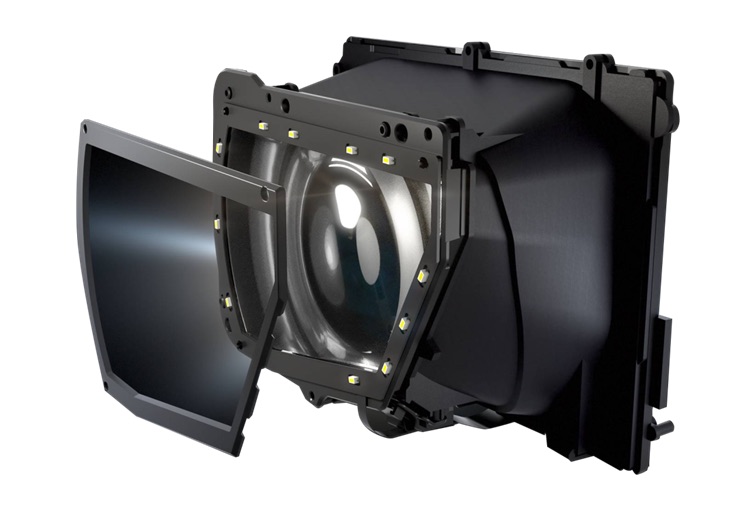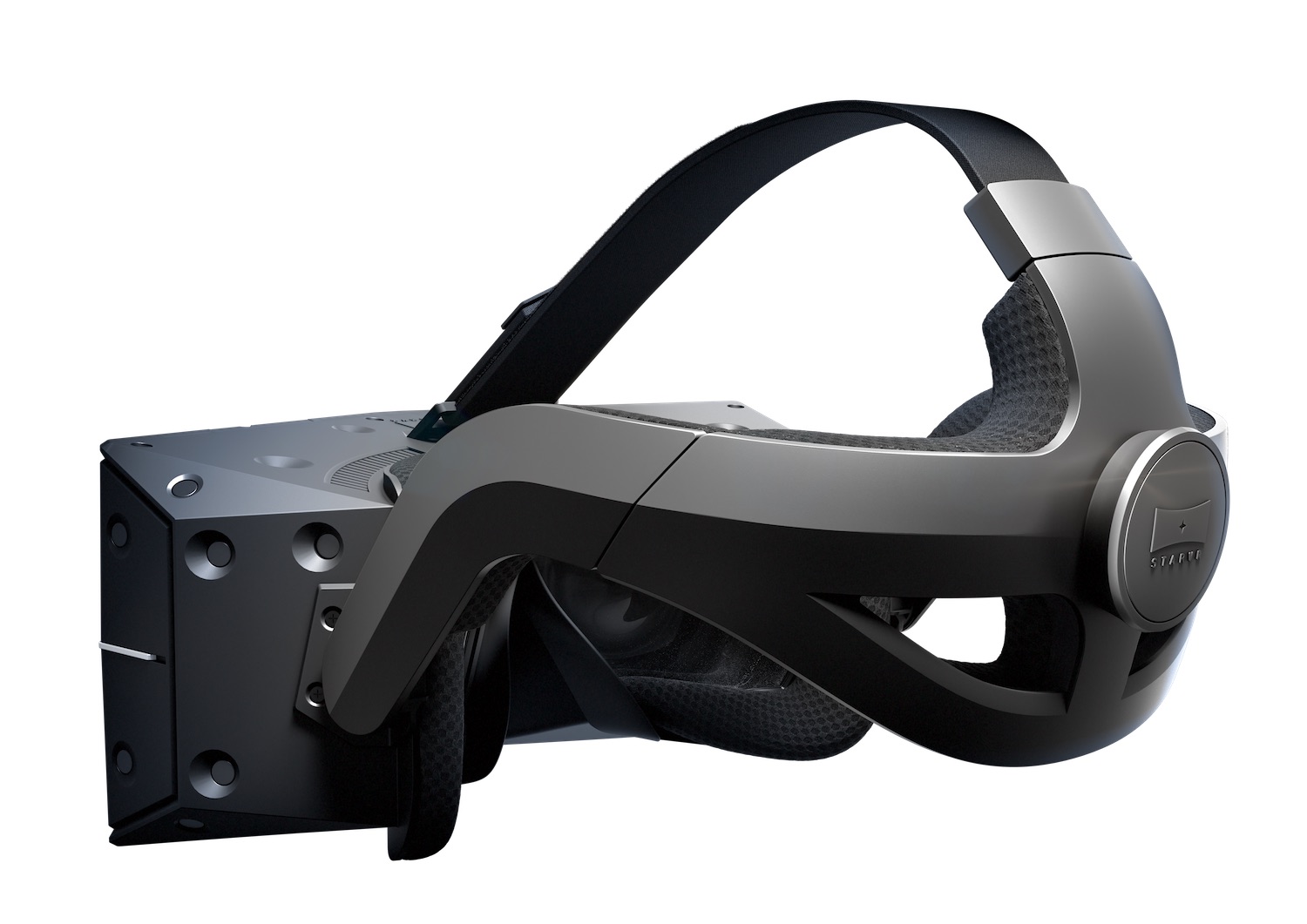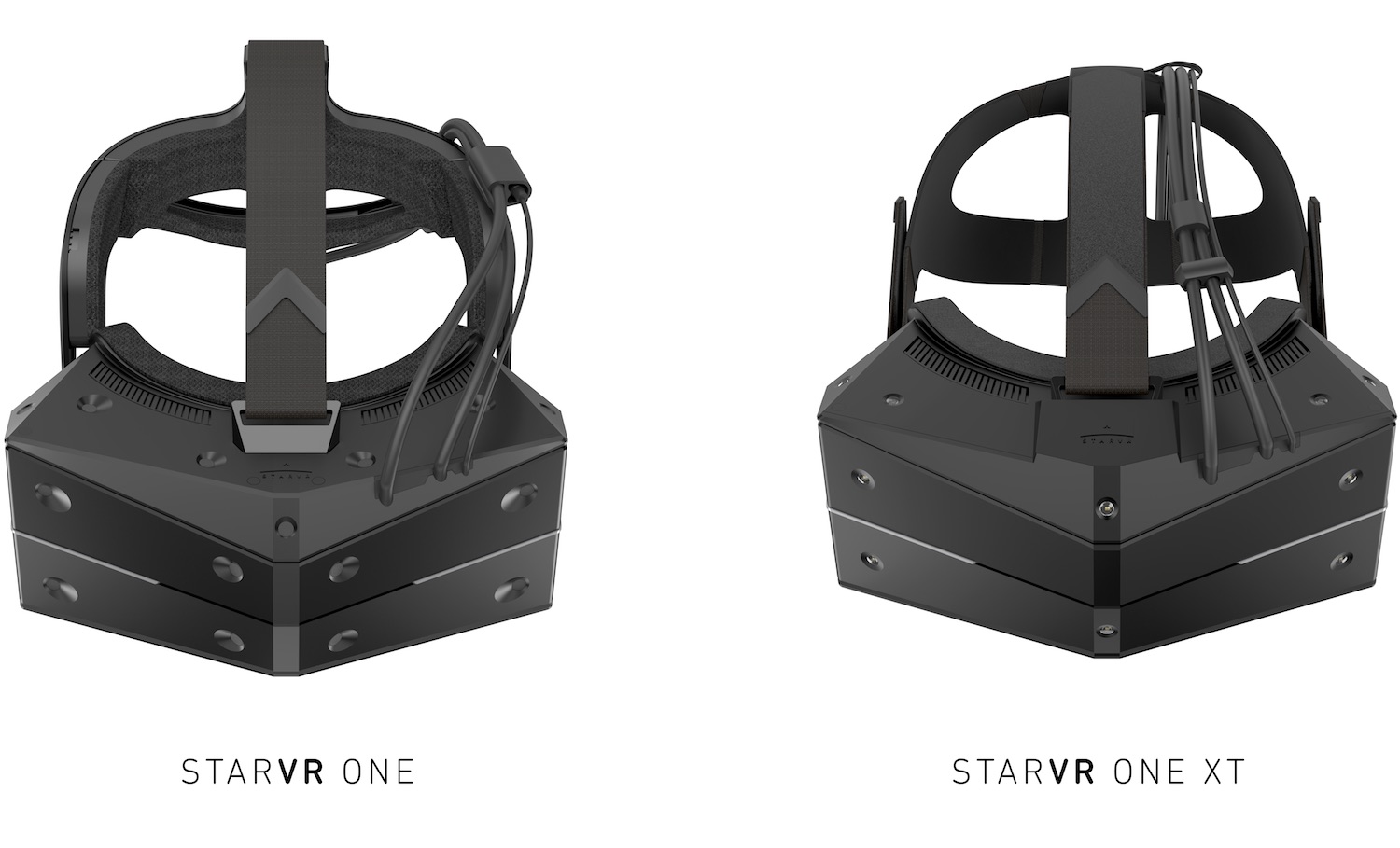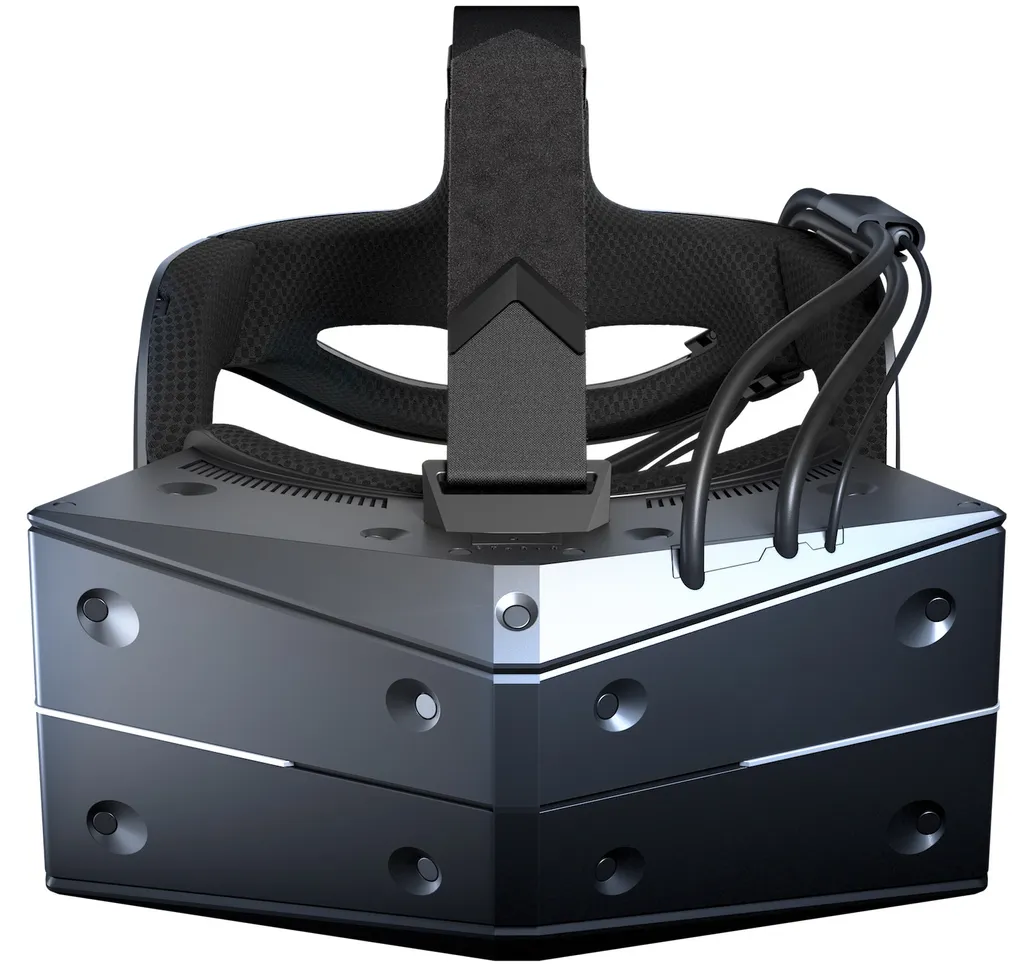StarVR unveiled its long-in-development commercial VR headset at SIGGRAPH today. The StarVR One HMD promises SteamVR 2.0 Tracking with visuals running at 90 frames per second, eye-tracking and a field of view covering “nearly 100 percent of natural human vision.”
The headset is being shown with a handful of experiences at SIGGRAPH this week with plans to ship to buyers sometime in 2018. No price is being revealed yet.
StarVR One uses custom fresnel lenses in front of a pair of AMOLED panels. Each panel carries dimensions of 1830×1464 pixels (I triple checked that figure), making for a total of around 5.4 million pixels on the display. That’s a step up from Vive Pro and its 4.6 million pixels. StarVR features a wider field of view, though, claimed at 210-degrees horizontal and 130-degrees vertical. Representatives said it has more than 16 pixels per degree and that counting subpixels on StarVR (red-green-blue for every pixel) would make for a better comparison to a display like the Vive Pro’s.

StarVR One also includes Tobii eye-tracking. This feature will require a short calibration step for each user, but it should also measure the distance between your eyes and enable foveated rendering. In case you are unfamiliar, foveated rendering relies on quickly tracking eye movements to focus the processing power of your VR system so it draws the greatest detail directly in front of your eyeballs. Foveated rendering could be necessary for VR headsets to deliver more detailed virtual worlds on less expensive graphics cards. For something as beefy as StarVR One, that means bringing the minimum system specification down to the higher end NVIDIA GTX 1080 (with an Intel i7-7700 or AMD RyzenTM 7 2700X).

The headset is said to weigh 450 grams without the headstrap and 5.9 meter cable. Another version of the system, StarVR One XT, weighs a little less and features support for optical tracking solutions like those found in large-scale VR attractions.

We’ve seen earlier wide field of view headsets from StarVR over the years — shown at conferences or at IMAX locations — but the system has been fairly limited because it only showed your eyes 60 frames each second and required ultra-high end graphics cards. With foveated rendering and a higher quality display, StarVR One looks to solve those problems.
StarVR Corporation is a joint venture between PC manufacturer Acer and developer Starbreeze. It is headquartered in Taipei.
Update: Additional context added after publication about the subpixel arrangement of the StarVR display.





























